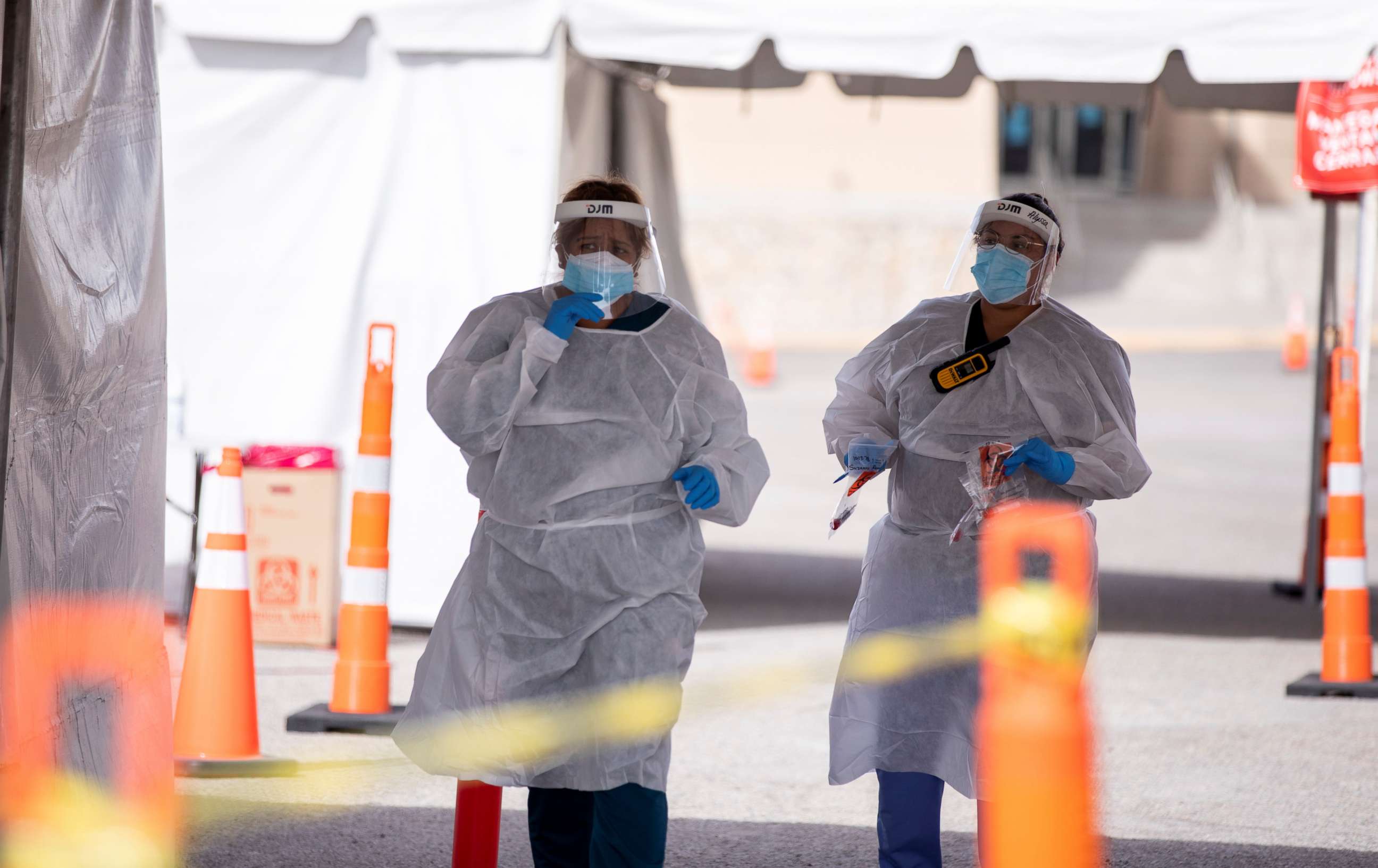Why are authorized monoclonal antibodies rarely being used to treat COVID-19 ?
"Without it, I don't know how much worse I would have been," one patient said.
Susan Eisen assumed her sore throat and headache would go away. Maybe she'd been working too hard, or not drinking enough water. But her symptoms went on for days, and then her partner came down with a fever.
They both tested positive for COVID-19, and Eisen's mind began to race: What would happen to her kids, her jewelry store? Was her will in order? She gave her son all the combinations to their safe.
But her son was more optimistic. He had heard of a new coronavirus treatment -- like the one President Donald Trump was given during his bout with COVID-19.
The treatment of lab-created monoclonal antibodies is meant to be used in the early stages of infection, to help patients -- those at high-risk for severe illness -- recover from COVID-19.
At 67, Eisen qualified as an at-risk patient, and El Paso, Texas, where Eisen lives, had just launched a pilot program for the Eli Lilly therapy. At her son's prodding, Eisen and her partner went to receive it two days later.
But when they arrived at the convention center infusion site, they were the only two patients there.
"I wondered, 'Where is everybody?'" Eisen told ABC News. "I know we're not the only one with COVID in El Paso."

The empty room echoes what new data underscores: so far, more than 400,000 patient courses of both the monoclonal therapies from Eli Lilly and Regeneron have been allocated to the states, and more than 250,000 have been delivered -- but very little of what has been distributed is actually being used. ABC News confirmed the findings of a new U.S. Department of Health and Human Services report which shows that only 5-20% of that available supply has been used -- strikingly low uptake of what could be a “lifesaving intervention” for some COVID-19 infections as case counts surge across the country.
Dr. Moncef Slaoui, the head of Operation Warp Speed, lamented the "disappointing level of usage of the monoclonal therapies" at a briefing Wednesday.
"We hope to see a much, much higher level of usage of the doses," Slaoui said. "It's really not acceptable, so we look forward to that improving."
But the issue of who gets the treatment, and when, is complex: the therapy is only for a select subset of the population, and there is a fairly stringent screening process.
The antibodies are meant to treat non-hospitalized, high-risk patients -- especially those with underlying conditions -- with mild to moderate symptoms. They are administered early on as a way to keep the patients from developing more severe symptoms. It's a treatment meant to troubleshoot the virus' impact, and not meant for hospitalized patients with severe cases, or for the younger, and or, healthier patient
With hospital beds and staff members both stretched thin across the country, these therapies could also relieve the pressure valve on the health care system. And though they've shown to be promising -- with two candidates now having received emergency authorization from the Food and Drug Administration -- what's still unknown is just how effective they really are. Early studies have been promising, showing the treatment may significantly reduce hospital rates if taken in time; however National Institutes of Health's treatment guidelines state there is "insufficient data to recommend either for or against the use" of either Eli Lilly or Regeneron's therapy for the treatment of COVID outpatients -- and that neither should be considered the standard of care for COVID treatment.
Still, with only 5-20% of the therapies being taken, health officials are concerned, and trying to understand the root cause. Does the low usage reflect a lack of public awareness? Is more education needed for providers?
Dr. Edward Michelson, chair of the Department of Emergency Medicine at Texas Tech University Health Sciences Center, hopes what's been a "slow-to-start" process ticks up.
"Perhaps some people aren't aware of it yet. Some might be skeptical, could be because they're feeling well … but this is a tool," Michelson said. "It's not perfect, but it's one we have."
As of Thursday morning, 160 patients had received the therapy in El Paso, Michelson said. That is just 10% of the some 1,600 courses allotted to the city.
Michelson, committed to raising public awareness, is now advocating for people who are notified via phone or email about their positive COVID-19 test results, to also be given information about the monoclonal program.
"It's been tricky, and we're still in the middle of this pandemic and this time around it feels like a marathon," Michelson said. "If the coming vaccines are the finish line, along the way we have these important milestones, and we're proud to do our part."
The therapies aren't simple to administer: The intravenous infusion takes an hour, and patients have to be monitored for another hour afterward, in case they have an adverse reaction. That requires complex logistical coordination that state and local authorities, as well as health officials, have to handle.
An HHS spokesperson told ABC News that some health care systems may need to create "new clinical pathways" to administer the cocktails.
"We need to make sure people are aware of this," Eisen said. She felt better within several days of receiving the therapy, and believes it helped her recoup. "I was at the point where I'll take whatever they're willing to give me. But without it, I don't know how much worse I would have been."
ABC News' Eric M. Strauss contributed to this report.



